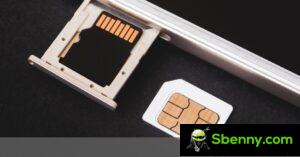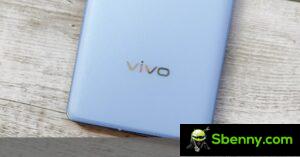introduction
The dust has settled and we’ve had a fair amount of time to get around all the new features One UI 5.0 has to offer. It has come a long way since the first iteration of the new chapter of Samsung OS after Samsung Experience. It’s easily one of our favorite custom Android skins, and the latest version is a big step forward in many respects.
The first thing we noticed is how much smoother it is compared to One UI 4.0.
Secondly, it is evident that the developer team has been working hard to bring a number of new features to the already feature-rich operating system. While most other OEMs have introduced modest changes to their new Android overlays, Samsung’s changelog is a bit difficult to cover from top to bottom. There are new additions in virtually every category, from visual changes to some under the hood improvements.
In fact, One UI 5.0 feels like a much bigger update than Android 13 itself. This brings us to our first stop in our One UI 5.0 review.
Android 13
The basic features of Android are sometimes overlooked by other manufacturers when they update their proprietary versions of the OS, but Samsung diligently implements them in its One UI. The intrinsic features of this year’s Android 13 are few and most focus on the visual aspect of the Material Design aspect of Android. And since those don’t apply to Samsung’s vision for what Android should look like, this leaves us with improvements focused on privacy and notifications.

Once you install an app and launch it for the first time, the system will ask if you want the app to send you notifications or keep them disabled by default. Notification related controls are now easier to access and will always appear at the top of the system menu. A direct link to the app’s internal notification settings is located at the bottom of the notification panel. More granular control over the types of notifications apps can send: badges, floating notifications, and lock screen notification cards.
There’s also separate language control for each app, which makes us wonder why a basic feature wasn’t available before.
Regarding privacy, Android 13 now deletes clipboard data after a while because malicious apps often exploited the clipboard as users often copy sensitive data such as phone numbers, emails, credit card numbers, and even passwords .
A 5.0 user interface
Visual changes
As we’ve mentioned before, perhaps one of the biggest improvements is the overall performance of the operating system. Ever since the ancient TouchWiz, Samsung’s software has been notorious for its rather slow performance. And while One UI is much better than its predecessors, it still lags behind its rivals in this regard. Literally and figuratively speaking. One UI 5.0 aims to fix that, and it does up to a point. Samsung has optimized the animations and transitions that are noticeably faster and smoother. Everything feels a little more natural.
However, we could think of many other Android iterations that offer a smoother and faster experience, so Samsung still has work to do.
Other visual changes include better contrast, new app icons, and illustrations in system menus so that apps are easier to recognize and text to read.






Home screen, notification area, settings menu
Once again, the accent color palette is auto-generated based on the wallpaper, but this time the system offers a wider choice of color schemes, and that palette can be applied to app icons as well.



Customization and background options
Widgets can now be stacked and you can switch between widgets with just a tap. Note that not all widgets support stacking, so app developers may need to work around it very soon.


Pile of widgets
Last but not least, the default dialer now selects live wallpapers for each contact by default, so it’s easier to see at a glance who’s calling. Unless, of course, you assign an AR emoji, sticker, or photo of your choosing.
New modes
Samsung is introducing so-called routines. You can choose a mode based on what you are doing right now and perform certain actions, change audio profiles, display settings, notifications, etc. For example, the Driving Routine profile can be set to activate DnD mode and launch Spotify automatically, for example. You can even trigger certain routines with actions of your choosing, like turning on hotspot or airplane mode.




Routines and modalities
Multitasking
An easier way to launch two apps in split screen mode: a short swipe from the bottom edge of the display with two fingers. The same action can be performed through the recent apps menu.


Split screen and multi-window for all apps
Device connections
While there’s nothing particularly new in this category, Samsung makes connecting with nearby devices a little easier. In the Connected Devices submenu, you will find devices available for Smart View (read screen cast) or Samsun DeX connection, where available. Chromecasts are easier to discover and also stream audio. When you play audio from your phone, nearby Chromecasts will show up in the quick panel.
And once you cast your phone screen on a TV, for example, you can choose to hide your notifications so others can’t read sensitive information from your phone.
Camera and gallery, photo and video editing
There are no major changes to camera performance or new modes, but there are a couple of new additions. For once, it’s easier to zoom in and out with one hand, Pro mode gets the histogram, you can add a custom watermark or date on every photo you take, and telephoto now supports Food mode.
Samsung tries to clear the clutter in the Gallery and the home screen can now be customized. The goal is simple: remove the albums you use less frequently and leave the ones you do.


New gallery layout
The built-in photo and video editors get a couple of new features. You can create a sticker from any image, now there are more ways to edit GIFs, draw perfect shapes on videos and photos using the pen tool, and you can find 60 new emoji stickers to add to your photos and clips.
Samsung keyboard
Aside from the extra emojis, the keyboard now inserts default facial expressions based on keyboard symbols. Oh, and you rearrange the symbols on your keyboard as well as those that appear next to the space bar.


Samsung keyboard
Smart recognition of text and images
Google introduced something similar with Android 13 on new Pixel phones. Now you can extract text from an image, photo or even a screenshot. The software can also recognize certain text formats. For example, it suggests certain actions depending on whether it’s an email, a phone number, a website, etc.



Recognition of text in images
There is also a security feature that searches for sensitive information such as credit cards, ID cards, passports, etc. And if you try to share it, a message will appear asking if you’re sure you want to continue sharing this information.
Notifications
We’ve already touched on the new notification features that come bundled with Android 13, but Samsung has gone the extra mile to deliver some small improvements. The first thing you’ll notice is that the notification cards in the dropdown menu appear with a larger app icon and a corresponding color. Text alignment in these notification cards is also optimized for better readability.

New notification tabs
Various
Some small new features popularized in the system include exceptions for DnD mode (apps of your choice will not be affected by DnD), RAM Plus can be completely disabled via Device care, background auto-optimization which keeps system running smoothly, configure other timer simultaneously, expanded search in the My Files app, redesigned Digital Wellbeing, etc.







Digital Wellbeing, Find My Files, DnD Exceptions, and RAM Plus
Final thoughts
All in all, we like what One UI 5.0 has to offer. It’s a substantial improvement over version 4.0 in many respects, especially when it comes to performance, which we believe is still the main shortcoming of Samsung’s custom Android overlay. The lengthy changelog is also a nice surprise given how many of Samsung’s rivals have become complacent and offered somewhat boring major updates this year.

Even so, Samsung was careful with the changes so as not to completely change the overall feel of One UI. It’s still familiar but with better visuals and more functional than ever.







Start a new Thread